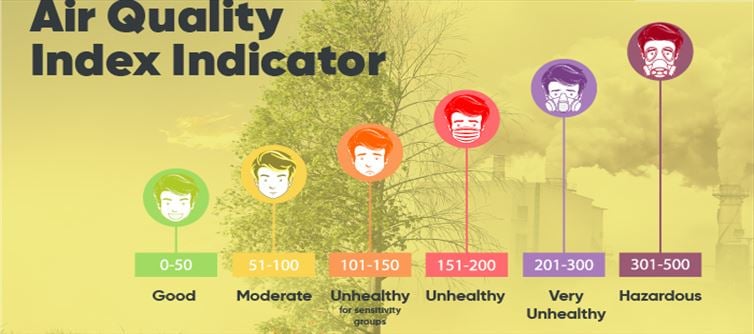
Why and how does the air Quality Index (AQI) operate?

Air pollution is measured using a thermometer known as the air Quality Index, or AQI. This allows for the measurement of the levels of ozone, nitrogen dioxide, and carbon dioxide in city air. The AQI measures air quality and displays results in numbers between zero and 500. The level of the air index increases with the quantity of pollutants present, and the higher this level, the more hazardous the air is. In other words, a city's air quality is deemed to be "good" if its AQI falls between 0 and 50. 'Satisfactory' air quality is defined as falling between 51 and 100.
This area has "moderate" air, which is classified between 101 to 200.
'Bad' between 201-300 'Very bad' between 301-400
'Severe' refers to values between -401 and 500.
It's crucial to remember, though, that the pollution levels in various nations have an impact on the air quality index. The Ministry of Environment, Forests, and Climate Change in india launched the AQI. The slogan "one number, one colour, one description" guided its launch.
Since a sizable portion of the populace is uneducated, colors were also added to help convey to them the gravity of the pollution problem.
Eight pollution factors are used to calculate the air quality index (AQI) in India: PM10, PM 2.5, NO2, SO2, CO2, O3, NH3, and Pb. reveals the air quality based on how much of these variables were present during the previous day. This is why it is deployed in various locations around the city. The public is also given health-related suggestions based on its readings.




 click and follow Indiaherald WhatsApp channel
click and follow Indiaherald WhatsApp channel